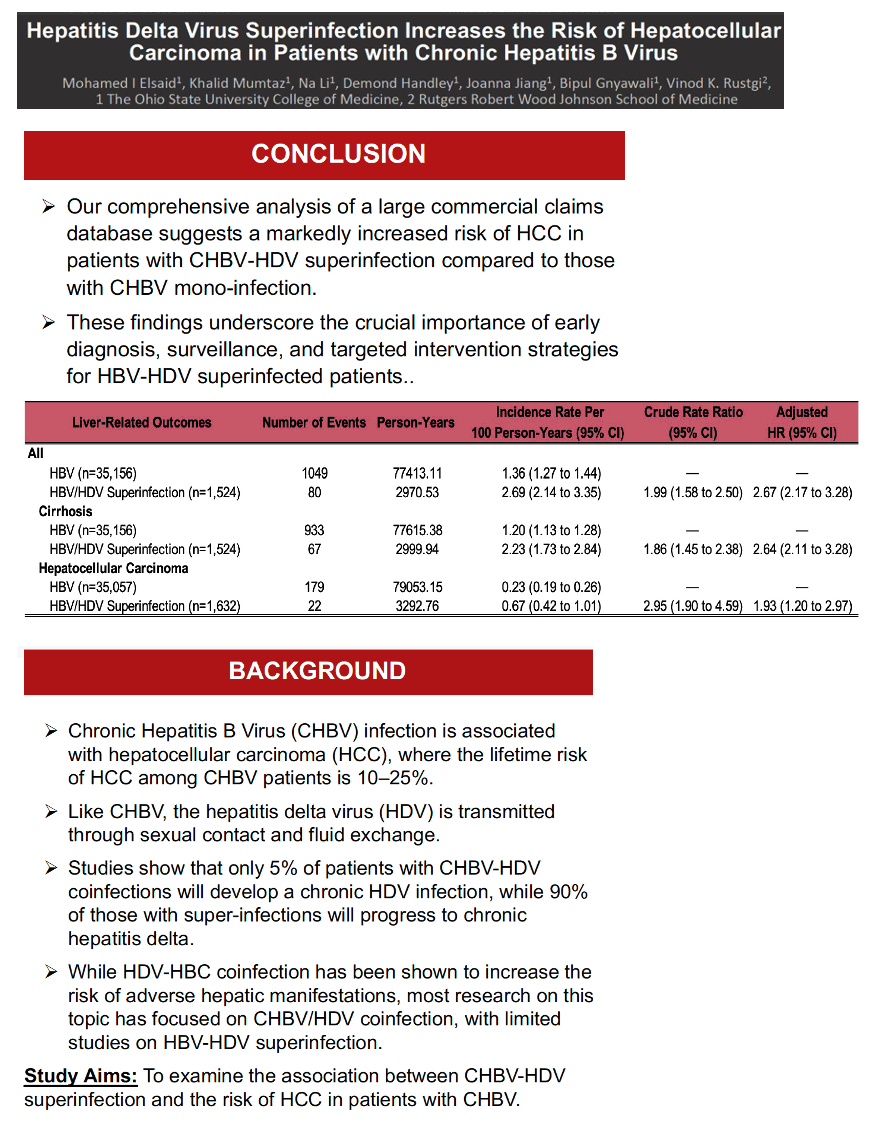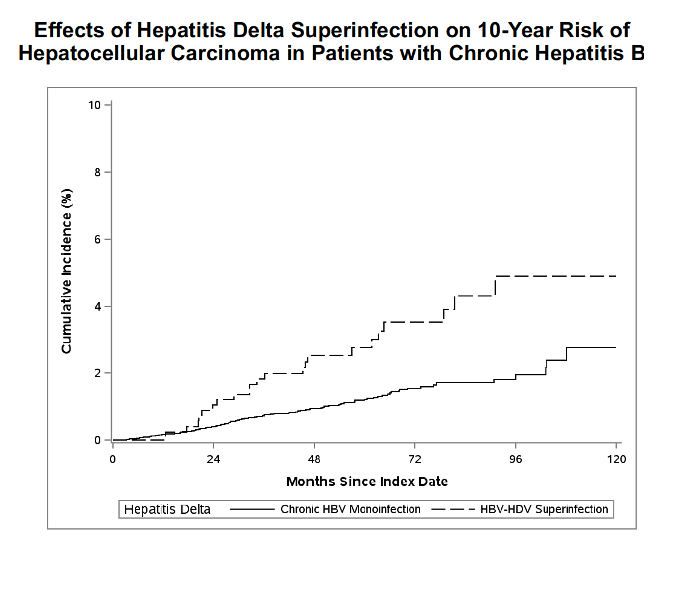 |
 |
 |
| |
HDV Superinfection Doubles Risk of HCC Versus HBV Infection Alone
|
| |
| |
AASLD 2023, The Liver Meeting, November 10-14, 2023, Boston
https://www.aasld.org/the-liver-meeting
Mark Mascolini
Compared with HBV monoinfection, HBV plus hepatitis delta virus (HDV) superinfection more than doubled cirrhosis risk and almost doubled hepatocellular carcinoma (HCC) risk in an analysis of a 36,689-person US commercial insurance claims database.
Ohio State University's Mohamed Elsaid and colleagues noted that chronic HBV infection carries a 10% to 25% lifetime risk of HCC. HBV/HDV coinfection boosts risk of liver complications, they added, but the role of HBV/HDV superinfection-new HDV infection after chronic HBV infection is established-remains incompletely understood.
To begin filling this knowledge gap, Elsaid and coworkers analyzed the MarketScan Commercial Claims database from January 2008 through December 2017, collecting claims data from inpatient admissions and outpatient services records to find people with chronic HBV infection. They defined superinfection as a new HDV diagnosis more than 90 days after the first chronic HBV diagnosis. And they modeled HDV status as a time-varying covariate to account for the impact of time between chronic HBV diagnosis and first recorded HDV diagnosis. Cox proportional hazards models assessed adjusted risks for cirrhosis and HCC in people with chronic HBV alone versus those with HBV and HDV superinfection.
The analysis focused on 36,689 adults with chronic HBV infection, 53.7% of them men. They averaged 45 years in age; 1633 of them (4.5%) had HDV superinfection. An average 26.2 months passed between chronic HBV diagnosis and HDV superinfection. HCC developed in 201 people during a median follow-up of 19 months.
HCC risk was almost 3-fold higher with HDV superinfection than with chronic HBV alone (1.4% vs 0.5%, P < 0.001). HCC incidence was also almost 3-fold higher in people with superinfection (6.7 vs 2.3 per 1000 person-years, P < 0.001).
Adjusted proportional hazards models determined that HDV superinfection boosted cirrhosis risk 2.6-fold compared with chronic HBV infection alone (adjusted hazard ratio [aHR] 2.64 (95% confidence interval [CI] 2.11 to 3.28) while almost doubling HCC risk (aHR 1.93, 95% CI 1.20 to 2.97). HDV superinfection upped the risk of either cirrhosis or HCC more than 2.6-fold (aHR 2.67, 95% CI 2.17 to 3.28).
The researchers believe their findings suggest a much higher risk of HCC with HDV superinfection than with chronic HBV infection alone and "underscore the crucial importance of early diagnosis, surveillance, and targeted intervention strategies for HBV-HDV superinfected patients."
Reference
1. Elsaid MI, Mumtaz K, Li N, et al. Hepatitis delta virus superinfection increases the risk of hepatocellular carcinoma in patients with chronic hepatitis B virus. AASLD 2023, The Liver Meeting, November 10-14, 2023, Boston.




|
| |
|
 |
 |
|
|